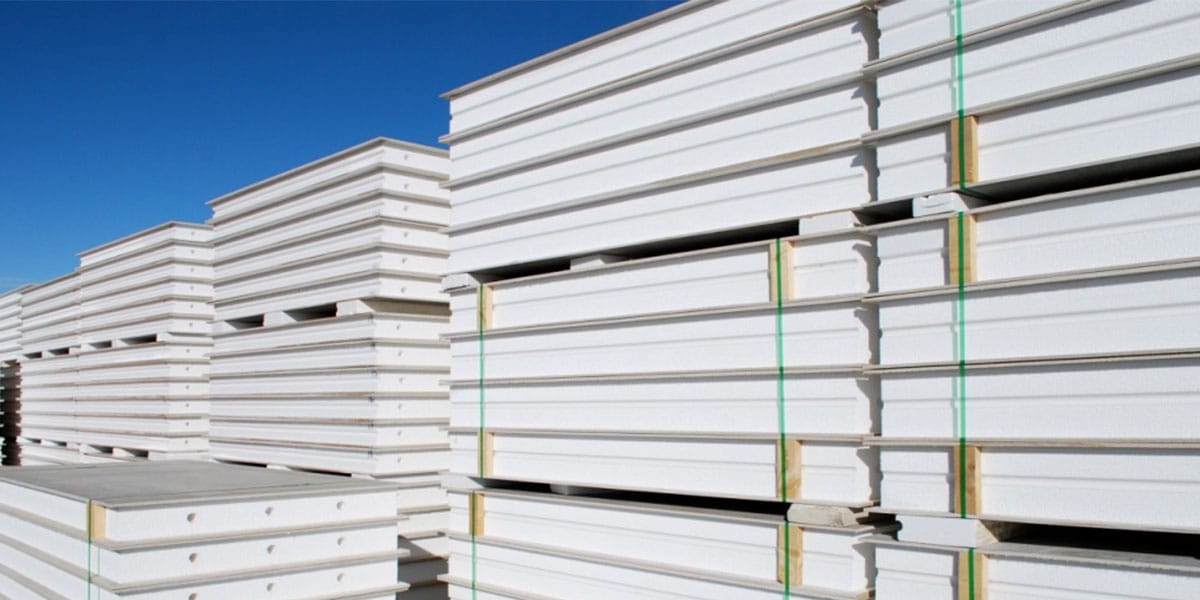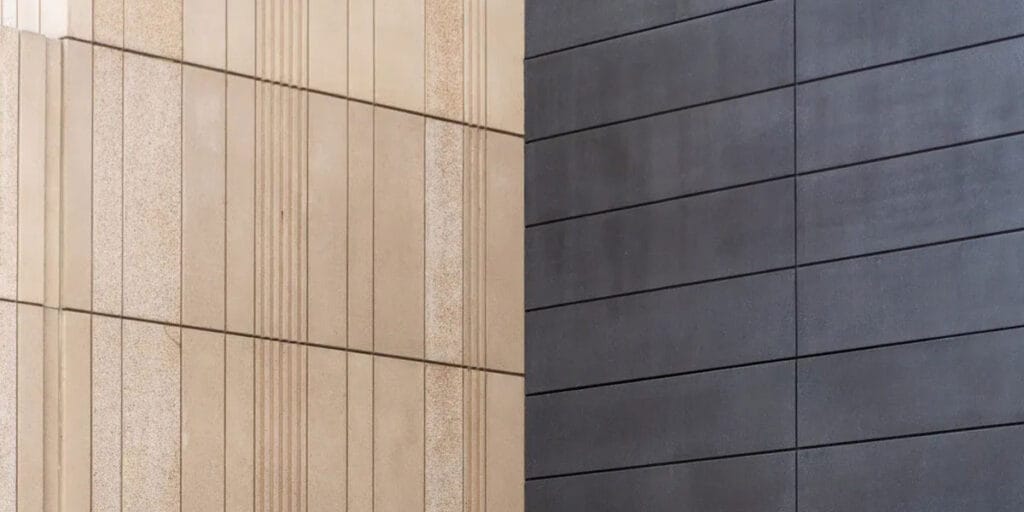
13 May Discover the Benefits of Structural Concrete Insulated Panels in 2025
Table of Contents
Structural Concrete Insulated Panels (SCIPs) change building methods in 2025. These panels are strong and work very efficiently. They last long and keep buildings well-insulated. Research shows they resist water better than regular materials. SCIPs also stay strong and stable for many years. They can handle strong winds, making them great for modern buildings. Unlike wood frames, SCIPs hold more weight and bend less under pressure. They save energy and help the environment by being eco-friendly. SCIPs are a smart choice for a greener future.
Key Takeaways
SCIPs are made ahead of time, saving work and time.
These panels keep heat in or out, cutting energy costs.
SCIPs are good for the planet, making less pollution and trash.
They are strong and safe, great for bad weather areas.
SCIPs follow new building rules, helping save energy and stay strong.
Understanding Structural Concrete Insulated Panels
Definition and Composition
Structural Concrete Insulated Panels (SCIPs) are modern building materials. They are made to be strong, insulated, and eco-friendly. These panels have a foam center between concrete or other outer layers. The foam keeps heat in, while the outside layers add strength.
Here’s a simple look at their parts:
Part Type | What It’s Made Of |
|---|---|
Foam Core | EPS, XPS, or PUR foam for insulation |
Outer Layers | OSB, metal, plywood, fiber-cement, magnesium board, or fiberglass sheathing |
This design makes SCIPs great for keeping buildings warm and sturdy. They are perfect for today’s construction needs.
How They Work in Construction
SCIPs are useful for building walls, roofs, and floors. They save time because they are made in factories and ready to use. This means less work and fewer delays on-site.
Studies show SCIPs work well in areas with disasters. For example, tests prove they are strong and flexible during earthquakes. With a strength factor of 1.37 and flexibility of 4.11, they handle shaking well.
Here are some main benefits of SCIPs:
Faster Building: Prefab panels make construction quicker.
Better Insulation: Keeps energy use low with good heat control.
Eco-Friendly: Uses less concrete, helping the planet.
Long-Lasting: Resists fire, storms, and damage for over 100 years.
SCIPs also meet strict safety rules. For example:
Feature Type | Details |
|---|---|
Strength | Built to hold heavy loads and resist wind. |
Safety Level | |
Testing | Includes tests for weight, bending, and pressure. |
Standards | Meets British rules like BS 5534 and BS 5628-3. |
Using SCIPs helps you build faster, greener, and stronger buildings.
Benefits of Structural Concrete Insulated Panels in 2025
Energy Efficiency and Insulation
Structural Concrete Insulated Panels (SCIPs) save energy and work well. They keep heat inside during winter and block it in summer. This helps lower energy bills and keeps homes comfortable. SCIPs also stop heat from escaping or entering through gaps.
Using SCIPs helps the environment by cutting carbon emissions. For example:
A 3,000-square-foot house with SCIPs saves 10,326 pounds of carbon yearly.
Over its life, this equals over 1,000,000 pounds of carbon saved.
Since 2010, SCIPs have stopped 10,700 metric tons of CO2, like removing 215 cars yearly.
SCIPs are made using renewable energy like solar power. This process cuts CO2 emissions by 2,850,000 pounds in 20 years. Choosing SCIPs means helping the planet and saving energy at home.
Cost-Effectiveness and Savings
SCIPs save money by lowering heating and cooling costs. Their insulation works better than regular materials, saving more over time. For example:
Statistic Description | Value |
|---|---|
Energy savings over 50 years | |
Energy payback time | 5.1 years (as low as 2.7 years in Zone 1) |
Time to offset greenhouse gases | 3.8 years |
Global warming reduction | 13.2 times more than CO2 production |
SCIPs are made in factories, so building is faster. Faster building means lower labor costs and fewer delays. Over time, SCIPs save money through energy savings and less maintenance.
Durability and Disaster Resistance
SCIPs are strong and last a long time. They are better than wood for areas with disasters. For example:
Feature | SCIPs | Traditional Materials |
|---|---|---|
Durability | Very strong | Weaker (e.g., wood frames) |
Wind Resistance | Breaks in strong winds | |
Fire Rating | 4 hours | 45 minutes |
Thermal Bridging | Stops heat loss | More heat escapes |
Maintenance | Low upkeep | Can rot or get termites |
Corrosion Resistance | No rusting | Needs care to avoid damage |
Tests show SCIPs handle disasters like earthquakes and hurricanes well. Foam inside reduces shaking by 22% and movement by 86%. SCIPs are a safe and strong choice for buildings in tough weather areas.
By using SCIPs, your building stays strong, safe, and easy to maintain for years.
Sustainability and Eco-Friendliness
Structural Concrete Insulated Panels (SCIPs) are a smart, green building choice. They help the environment by using less energy and cutting carbon. Choosing SCIPs means helping the planet and getting lasting benefits.
SCIPs release fewer greenhouse gases than regular materials. These gases come from making and moving building supplies. In 2025, builders pick SCIPs because they use fewer resources and make less waste. For example, making SCIPs uses 24% less energy than fiberglass insulation. This saves energy and lowers the carbon footprint of your project.
Did you know? SCIPs are made with renewable wood and modern methods. This reduces waste at building sites and keeps materials eco-friendly.
Here’s how SCIPs help the planet:
They cut energy use for heating and cooling, saving power.
SCIPs keep heat in better than stick-frame walls.
They stop air leaks, which saves even more energy.
Using SCIPs can improve HERS and LEED scores for efficiency.
The eco-friendly benefits of SCIPs go beyond saving energy. In 2024, the Structural Insulated Panel Association (SIPA) shared its first Environmental Product Declaration (EPD). This report shows how SCIPs are good for the planet.
Feature | Description |
|---|---|
EPD Completion | SIPA shared its first EPD in 2024, showing SIPs’ life-cycle details. |
Energy Efficiency | SIPs use 24% less energy to make than fiberglass insulation. |
Waste Reduction | SIPs create less waste than older building methods. |
Thermal Resistance | SIPs keep heat in, lowering energy loss. |
Airtightness | SIPs stop air leaks, boosting energy savings. |
Using SCIPs also helps fight global warming. These panels lower greenhouse gases during production and use. A building with SCIPs saves thousands of pounds of carbon each year. Over time, this makes a big difference for the planet.
When you pick SCIPs, you’re not just building. You’re choosing to save energy, protect the planet, and build a greener future. SCIPs are the way forward for eco-friendly construction.
Applications of Structural Concrete Insulated Panels

Residential Construction
Structural Concrete Insulated Panels (SCIPs) are changing how homes are built. They work for many types of houses, like fancy ocean-view homes, budget-friendly apartments, and small energy-saving units (ADUs). SCIPs keep homes cozy all year and stand strong in storms.
These panels also help save money on energy bills. Their U value keeps electricity costs low, even with less insulation. This means you can stay warm or cool without spending too much. Whether it’s a single home or a big apartment building, SCIPs offer strength, energy savings, and safety for your project.
Commercial and Industrial Use
SCIPs are great for business and factory buildings. The foam core inside gives good insulation at a low cost, making it popular in growing countries. Places like China, India, and Brazil use SCIPs a lot because they need more homes and buildings.
Another material, OSB, makes SCIPs even stronger for big projects. This is why they’re used in warehouses, factories, and offices. As green building becomes more popular, SCIPs help by cutting carbon and saving energy. They are affordable and easy to find, making them perfect for large projects.
Retrofitting and Renovation Projects
SCIPs aren’t just for new buildings. You can use them to upgrade old ones too. They are light and easy to install, which saves time and money. SCIPs also make older buildings warmer or cooler, cutting energy costs.
These panels make buildings stronger during upgrades. For example, adding SCIPs to walls or roofs helps protect against disasters. Whether fixing up a house or a business, SCIPs are a smart way to improve and protect your property.
The Importance of SCIPs in 2025
Compliance with Modern Building Codes
In 2025, building rules are stricter for safety and energy use. Structural Concrete Insulated Panels (SCIPs) help meet these rules easily. They are strong, insulated, and long-lasting, making them great for new buildings.
SCIPs are excellent for saving energy. Their foam center stops heat from escaping or entering. This keeps buildings warm in winter and cool in summer. These features match energy rules that require less energy use. SCIPs also resist fire for up to four hours. This is better than many fire safety rules, giving extra protection.
New rules also focus on strong buildings, especially in disaster areas. SCIPs are made to handle tough conditions like strong winds and earthquakes. For example, they can resist winds up to 250 mph, which is higher than hurricane zone requirements. Using SCIPs ensures your building meets strict rules and performs better overall.
Contribution to Climate-Resilient Construction
Climate change makes strong, adaptable buildings very important. SCIPs help create structures that handle changing weather and protect the planet. Their design lowers greenhouse gases and improves energy efficiency, making them eco-friendly.
SCIPs reduce how much buildings contribute to global warming. Over 20 years, walls with SCIPs have a global warming potential (GWP) of 234.16 to 283.46 kg CO2. Over 500 years, this drops to 190.40 to 229.90 kg CO2. Using materials like aerated concrete and special insulation can cut emissions by 20% without losing energy benefits.
SCIPs also make buildings stronger against extreme weather. Their foam core absorbs shocks, reducing damage during earthquakes. In hurricane zones, SCIPs resist strong winds, keeping buildings safe. They last a long time and need little upkeep, making them perfect for climate challenges.
By using SCIPs, you help build stronger, greener buildings. These panels lower environmental harm and protect your property from climate risks.
Structural Concrete Insulated Panels (SCIPs) are changing how we build in 2025. They save energy, cut costs, and help the environment. These panels keep heat inside, lowering energy bills. Since they are made in factories, building takes half the time. This saves money on labor and finishes projects faster. SCIPs also reduce waste at construction sites, helping the planet.
Key Points:
By using SCIPs, you create stronger, greener, and smarter buildings.
FAQ
What are Structural Concrete Insulated Panels (SCIPs)?
SCIPs are special building panels with foam in the middle. The foam is placed between concrete or other hard layers. They are strong, last long, and keep heat in. SCIPs work well for walls, roofs, and floors in homes, offices, or factories.
How do SCIPs save energy?
SCIPs keep heat inside during cold months and block it in hot months. This lowers the need for heating or cooling. Their tight design stops air leaks, saving energy and cutting your bills.
Are SCIPs suitable for disaster-prone areas?
Yes, SCIPs are tough against strong winds, earthquakes, and fires. They can handle winds up to 250 mph and reduce shaking during earthquakes. Their strength makes them great for places with bad weather.
Can SCIPs be used for renovations?
Yes! SCIPs are light and simple to put in, making them great for fixing older buildings. They add insulation, make structures stronger, and save energy without big construction work.
Are SCIPs environmentally friendly?
Yes, SCIPs use fewer materials and create less waste when made. They save energy, lower greenhouse gases, and help build eco-friendly, sustainable buildings.
Tip: Using SCIPs helps save energy and protects the planet.
